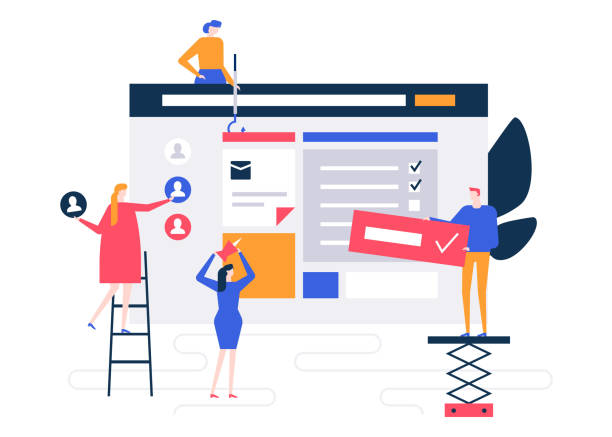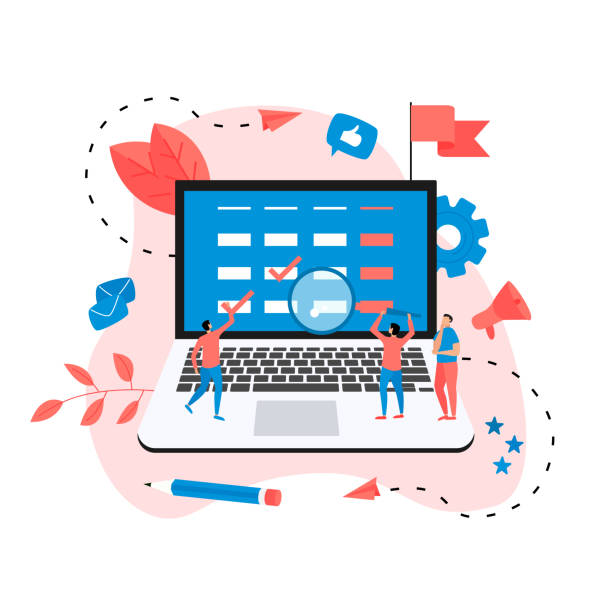Importance of On-Page SEO in Search Engine Optimization Strategy
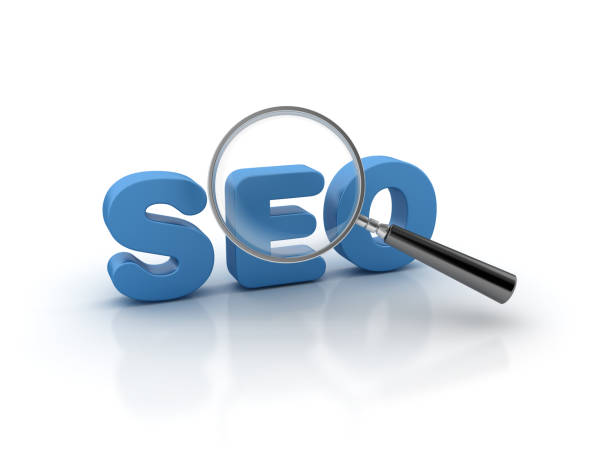
On-page SEO, also known as On-Page SEO, is the backbone of any successful search engine optimization strategy.
This aspect of SEO focuses on optimizing elements within your website to improve its ranking in search engine results pages (SERPs) and ultimately attract more organic traffic.
The importance of on-page SEO stems from the fact that we have complete control over it; unlike off-page SEO, which depends on external factors and link-building from other websites.
Search engines like Google, using their advanced crawlers, evaluate your website’s content to assess its relevance to users’ search queries.
Therefore, a strong on-page SEO ensures that your content is correctly understood and ranked by search engines.
This includes optimizing #keywords, #URL_structure, #title_tags and #meta_descriptions, #internal_linking, and #content_quality.
A deep understanding of these concepts and their correct implementation is vital for any business looking to increase its online visibility and attract potential customers.
This educational and explanatory approach helps you build a strong foundation for your SEO strategy and outpace your competitors.
Ignoring on-page SEO can lead to missing countless opportunities to appear in relevant searches, even if you have produced the best content.
Remember, the first step to being seen online is optimizing your website’s internal infrastructure.
Does your current corporate website present a worthy image of your brand and attract new customers?
If not, with Rasaweb’s professional corporate website design services, turn this challenge into an opportunity.
✅ Significantly improves your brand’s credibility and image.
✅ Paves the way for attracting new leads and customers.
⚡ For free and specialized consultation, contact Rasaweb now!
Keywords and their role in On-Page Optimization

Keyword research is the cornerstone of any successful on-page SEO strategy.
Choosing the right keywords ensures that your content is optimized for the searches users actually perform.
In this analytical and guiding section, we will discuss how to find and use effective keywords in on-page optimization.
There are two main types of keywords: Short-tail keywords, which are usually one to three words and have a high search volume but also high competition (like “SEO”), and Long-tail keywords, which are longer, more specific, and have lower search volume but higher intent (like “how to improve website on-page SEO?”).
Smart use of both types of keywords can help increase your quality traffic.
After selecting keywords, the next step is to naturally integrate them into your content.
This includes using the main keyword in the title tag, meta description, H1, and strategically in the main text, subheadings, and even image file names.
It is important to avoid “keyword density” as an outdated concept and instead focus on the natural and meaningful use of keywords and their synonyms.
Search engines are now much more advanced and can understand the overall meaning of the text, not just the repetition of specific words.
The main goal of on-page optimization with keywords is to comprehensively address the user’s search intent, so that the user finds all the information they need and has a satisfactory experience after landing on your page.
Content Optimization: The Beating Heart of On-Page SEO

Content is king, and in the world of on-page SEO, this king must be optimized in the best possible way.
Content optimization goes beyond including keywords; this process involves creating content that is not only appealing, informative, and valuable for search engines but also for users.
A specialized and explanatory content that fully answers user questions has a higher chance of ranking well.
To achieve this, your content must be comprehensive, accurate, and up-to-date.
Content structure plays a vital role.
Using headings (H1, H2, H3), subheadings, short paragraphs, lists (bulleted and numbered), and relevant images not only increases readability but also helps search engines better understand the structure and main topics of your content.
User experience (UX) is highly dependent on content quality and its presentation.
If users quickly leave your page (high Bounce Rate), this sends a negative signal to search engines.
Therefore, your content must be engaging and understandable.
To further enhance on-page SEO through content, using tables can present information in an organized and digestible manner.
Below is a table of key content optimization elements:
| Optimization Element | Description | Importance for On-Page SEO |
|---|---|---|
| Content Quality and Depth | Comprehensive, accurate, and unique content that addresses all aspects of the topic. | Increased credibility, reduced bounce rate, improved ranking. |
| Logical Structure and Readability | Use of headings, subheadings, short paragraphs, and lists. | Improved user experience, helps search bots understand content. |
| Addressing Search Intent | Content must directly answer the user’s question or need. | Increased dwell time, improved behavioral signals. |
| Freshness and Up-to-dateness | Information must be new and up-to-date with the latest changes. | Importance for news and trending topics, maintaining credibility. |
By observing these points, you can be sure that your content not only attracts users but also demonstrates to search engines that your page is a credible and relevant source, which in turn helps strengthen your on-page SEO.
Title Tags and Meta Descriptions: Critical Importance in On-Page SEO
![]()
Title Tags and Meta Descriptions are two vital elements in on-page SEO that directly impact how your website appears in search results and its click-through rate (CTR).
This guiding and educational section addresses their importance and how to optimize them.
The title tag is the main title of your page, displayed in the browser tab and as the largest and most clickable link in SERPs.
A good title tag should include the main keyword of the page, be between 50 to 60 characters long (to be fully displayed), and be engaging and descriptive to encourage users to click.
This is the first thing both search engines and users see, and it plays a significant role in on-page SEO.
Meta descriptions are short, persuasive summaries of your page’s content displayed below the title tag in search results.
Although Google has officially stated that meta descriptions do not directly affect rankings, they play a crucial role in increasing click-through rate (CTR).
An effective meta description should be around 150-160 characters, include relevant keywords, and have a call to action to encourage the user to click.
These descriptions help the user understand whether your page’s content addresses their needs.
Optimizing these two elements for on-page SEO and success in attracting organic traffic, is of particular importance.
Using snippet preview tools can help you see how your title tag and meta description will appear in search results before publishing, ensuring they are optimized and engaging.
Don’t forget that the ultimate goal of these optimizations is to attract the attention of both search engines and users, so you can achieve a better ranking and drive more users to your site.
Research shows that 80% of customers trust companies with a professional website more. Does your current website inspire this trust?
With Rasaweb’s corporate website design services, permanently solve the problem of customer distrust and a weak online image!
✅ Create a professional image and increase customer trust
✅ Attract more sales leads and business growth
⚡ Get free consultation
URL Structure and Internal Linking for Enhancing On-Page SEO
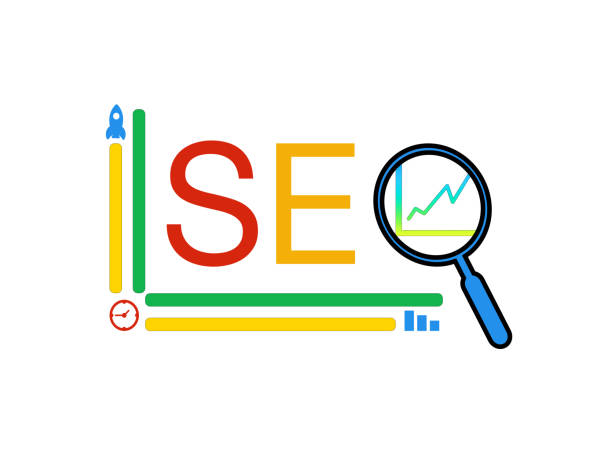
URL structure and internal linking strategy are two other important factors in on-page SEO that help search engines better crawl, index, and understand your website’s content.
This educational and guiding section shows you how to optimize these elements for maximum efficiency.
Descriptive and readable URLs that include relevant keywords not only create more clarity for users but also provide signals to search engines about the page’s topic.
For example, `yourwebsite.com/blog/seo-internal-guide` is far better than `yourwebsite.com/page?id=123`.
Using hyphens (-) to separate words instead of underscores (_) and avoiding special characters or meaningless numbers are among the best practices in this area.
Internal linking means connecting different pages of your website to each other.
This has several benefits for on-page SEO: firstly, it helps search engines discover and index all your pages; secondly, “Link Juice” is distributed throughout your website, strengthening more important pages; and thirdly, it improves user experience by providing clear navigation paths and easy access to relevant information.
When internal linking, it is crucial to use descriptive and relevant Anchor Texts that contain keywords.
Instead of “click here”, use phrases like “on-page SEO guide”.
A good internal linking strategy can help create a logical hierarchy on your website and establish more important pages as “Pillar Content,” which in itself will lead to the overall enhancement of your website’s on-page SEO.
These two elements work together so that both search engines and users can easily navigate your site and understand the value of your content.
Images and Videos: Optimization for On-Page SEO
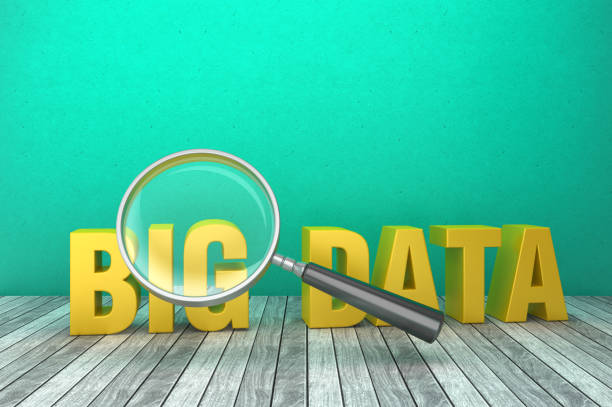
In the age of visual content, images and videos play an increasing role in attracting and retaining users.
However, optimizing them for on-page SEO is often overlooked.
This explanatory and specialized section shows you how to use these visual elements to strengthen your site’s ranking.
For images, the first and most important step is file size optimization.
Heavy images can significantly slow down page loading speed, which is an important factor in SEO and user experience.
Use optimized image formats like WebP and leverage image compression tools.
Then, pay attention to Alt Text.
Alt Text is a brief and accurate description of the image content, important for search engines and visually impaired users.
Use relevant keywords naturally in the Alt Text.
The image file name should also be descriptive; instead of `IMG_1234.jpg`, use `seo-internal-image.jpg`.
Videos also have great potential for on-page SEO.
If you host your videos on platforms like YouTube, leverage their internal SEO capabilities: optimize video titles and descriptions, use relevant tags, and provide captions or transcripts.
Video transcripts allow search engines to index the spoken content of the video, increasing your chances of visibility.
Additionally, you can use Schema.org/VideoObject structured data to help search engines better understand your video content and display it as a Rich Snippet in search results.
Optimizing images and videos not only helps improve on-page SEO but also increases user dwell time on your site by enhancing visual appeal and user experience, which is itself a positive signal for search engines.
This comprehensive approach is the key to success in today’s competitive world.
Loading Speed and User Experience (UX): Key Factors in On-Page SEO

Page loading speed and user experience (UX) are vital factors in website ranking in search engines, especially after Google introduced Core Web Vitals.
This analytical and specialized section delves into these two factors and their impact on on-page SEO.
Today’s users expect websites to load quickly; every second of delay can lead to an increased bounce rate and loss of traffic.
Google has increasingly focused on Core Web Vitals (including Largest Contentful Paint – LCP, First Input Delay – FID, and Cumulative Layout Shift – CLS), which are metrics for measuring the user’s actual experience of page speed and visual stability.
Optimizing for these metrics directly helps improve on-page SEO.
User experience goes beyond loading speed.
A website with excellent UX has easy navigation, responsive design for mobile and desktop, readable content, and a pleasant visual design.
These factors not only keep users on your site but also show search engines that your website values its users.
Improving UX leads to increased dwell time, reduced bounce rate, and increased user engagement, all of which are positive signals for ranking on Google.
To measure and improve these factors, you can use tools like Google PageSpeed Insights and Google Search Console.
The table below lists some of the most important technical and UX factors that affect on-page SEO:
| Factor | Importance for On-Page SEO | Improvement Solution |
|---|---|---|
| Page Loading Speed | Direct impact on ranking and user experience. | Image optimization, code compression, using CDN. |
| Responsive Design (Mobile-Friendly) | Very important for mobile ranking. | Using responsive design. |
| Easy and Clear Navigation | Reduced bounce rate, increased dwell time. | Simple menu, Breadcrumbs, effective internal linking. |
| Security (HTTPS) | Minor ranking factor, builds trust. | Installing SSL certificate. |
Prioritizing speed and UX in your on-page SEO strategy not only helps increase your ranking but also brings user satisfaction and leads to more traffic and higher conversion rates.
Schema Markup and Structured Data: Increasing Visibility in Search Results with On-Page SEO

Schema Markup or structured data, are codes added to your website to help search engines better understand your content and display it in richer, more appealing forms in search results (Rich Snippets).
This is a specialized and relatively new aspect of on-page SEO that can significantly impact your click-through rate and site visibility.
While Schema Markup is not directly a ranking factor, it can indirectly and greatly increase your organic traffic by making your display in SERPs more attractive.
By using Schema Markup, you can convey specific information about your page’s content to search engines.
For example, if you have a product page, you can specify the price, rating, availability, and user reviews with Schema.
This information can then be displayed as a Rich Snippet (such as rating stars or product price) alongside your title and meta description.
Common Schema types include Article, Product, Review, FAQPage, LocalBusiness, and Recipe.
Correct Schema implementation can differentiate your pages from competitors and encourage users to click on your link, even if your ranking is lower.
Tools like Schema Markup Validator from Google can help you test and validate your Schema implementation.
Although adding Schema to a website requires some technical knowledge, its benefits for on-page SEO and increasing visibility in the competitive search world, are highly valuable.
This is a smart investment for any website looking to maximize its search potential.
Worried about losing customers because you don’t have a professional e-commerce site?
With e-commerce website design by Rasaweb, forget these worries!
✅ Significant increase in sales and conversion rate from visitor to customer
✅ Professional and user-friendly design that builds customer trust
⚡ Get free consultation from Rasaweb
Continuous Updating and Maintenance of On-Page SEO

On-page SEO is not a one-time process, but rather a continuous educational and guiding effort.
Search engine algorithms are constantly changing and evolving, and user behavior also changes.
Therefore, regular updating and maintenance of your on-page SEO strategy are essential to maintain and improve rankings.
One of the most important aspects of maintenance is conducting regular Content Audits.
In this process, you evaluate your existing content to identify its strengths and weaknesses.
You may need to update old content, remove outdated information, or even merge or remove weak content with more comprehensive and high-quality content.
Monitoring keyword performance and rankings is also crucial.
Tools like Google Analytics and Google Search Console allow you to see which keywords generate traffic and for what phrases your pages are ranking.
This data helps you identify new opportunities and optimize your on-page SEO strategy.
Additionally, you should be mindful of broken links, both internal and external, as they can disrupt user experience and harm your site’s credibility.
Regular checking of the robots.txt file and sitemap is also necessary to ensure proper crawling by search engines.
Finally, given the continuous changes in Google’s algorithms, staying up-to-date with the latest SEO news and best practices is essential.
Participating in webinars, reading specialized articles, and following prominent SEO experts will help you stay one step ahead and fully leverage your on-page SEO potential.
Common Mistakes in On-Page SEO and Solutions to Avoid Them
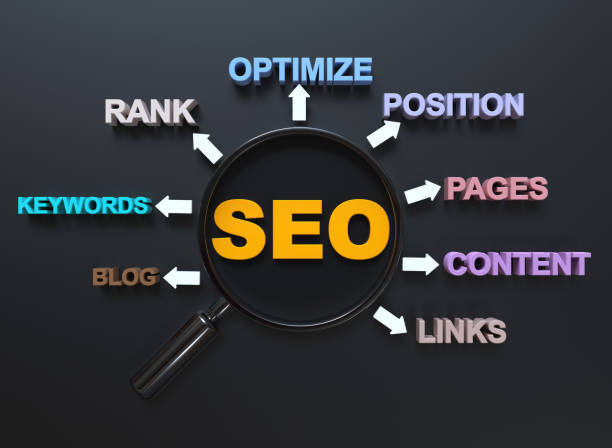
On the path to optimizing on-page SEO, there are some common mistakes that can harm your efforts.
Understanding these mistakes and the thought-provoking and analytical solutions to avoid them is key to sustained success.
One of the biggest mistakes is keyword stuffing.
In the past, this method was effective, but today, Google and other search engines penalize content that is artificially filled with keywords for the purpose of manipulating rankings.
The solution is to use keywords naturally and in a meaningful context, focusing on content quality and value.
Another mistake is having “thin” or low-value content.
Pages with sparse, duplicate, or low-quality content offer little value to users and are also ignored by search engines.
To combat this issue in on-page SEO, focus on producing comprehensive, in-depth, and unique content that fully addresses the user’s search intent.
Also, neglecting user experience (UX) is a major mistake.
A website that loads slowly, doesn’t display well on mobile, or has complex navigation drives users away and increases the bounce rate.
These negative signals are transmitted to search engines and harm the site’s ranking.
Investing in site speed, responsive design, and attractive visual design is crucial.
Broken internal links are also another common mistake in on-page SEO that can disrupt user experience and harm website crawling by search bots.
Regular review of links and fixing 404 errors is essential.
Finally, not using Schema Markup and other structured data means missing out on significant opportunities for highlighting in search results.
By avoiding these mistakes and adopting a comprehensive and continuous approach to on-page SEO, you can unleash your website’s full potential for increasing ranking and organic traffic.
Frequently Asked Questions
And other services of Rasaweb Advertising Agency in the field of advertising
Smart Advertising Campaign: A professional solution for analyzing customer behavior with a focus on intelligent data analysis.
Smart Google Ads: Professional optimization for improving SEO ranking using Google Ads management.
Smart Digital Advertising: A new service for increasing user engagement through attractive UI design.
Smart Direct Marketing: Revolutionize digital branding with the help of attractive UI design.
Smart Direct Marketing: An innovative platform for improving SEO ranking with marketing automation.
And over hundreds of other services in the field of internet advertising, advertising consulting, and organizational solutions
Internet Advertising | Advertising Strategy | Advertorial
Sources
- Comprehensive Guide to On-Page SEO at SEO Academy
- Your Website’s On-Page SEO Checklist
- Website Internal Optimization for Google – Digikala Magazine
- What is On-Page SEO? Complete Guide – HamyarWP
? In today’s highly competitive world, a strong online presence is the key to success. Rasaweb Afarin Digital Marketing Agency, by offering comprehensive and innovative solutions, including professional website design and targeted marketing strategies, accompanies your business on its path to growth and prominence.
📍 Tehran, Mirdamad Street, next to Bank Markazi, Kazeroun Jonoubi Alley, Ramin Alley, No. 6

